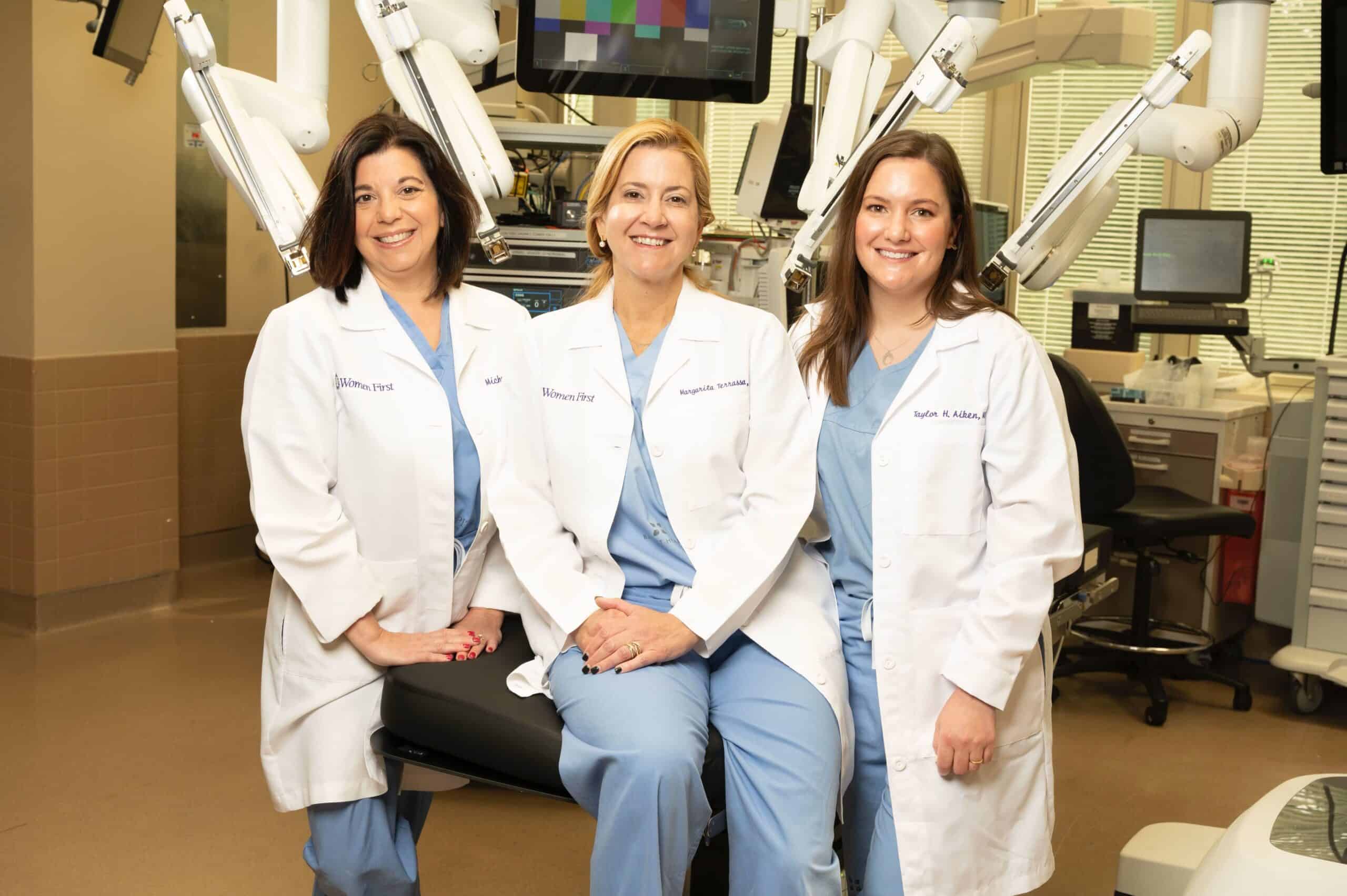 Robotic minimally invasive surgery is changing surgical gynecological care, providing women with safe, precise, and less invasive surgical options.
Robotic minimally invasive surgery is changing surgical gynecological care, providing women with safe, precise, and less invasive surgical options.
In a survey of over 6,000 women who had hysterectomies for non-cancerous conditions, those who had robotic-assisted surgery reported significantly higher overall satisfaction compared to other surgical approaches.
At Women First, our expert OB/GYNs use advanced robotic technology to deliver the highest-quality care. Take a look at how robotic minimally invasive surgery has changed surgical care in women’s health.
How Robotic Surgery Has Changed Women’s Healthcare
Robotic minimally invasive surgery employs advanced robotic systems to perform precise surgical procedures through smaller incisions, enhancing the surgeon’s ability to maneuver and visualize the surgical area.
Doctors at Women First have personally seen the difference with new robotic-assisted procedures for women. Margarita Terrassa, M.D., FACOG, Michele Johnson, M.D., FACOG, and Taylor Aiken, M.D., have performed over 700 robotic minimally invasive surgeries.
Research has found that robotic-assisted surgery is associated with less blood loss, less post-operative pain, faster recoveries, and fewer complications compared to open surgery for many gynecologic procedures.
Here is a look at Dr. Johnson’s experience with robotic minimally invasive hysterectomy.
- Robotic-Assisted Hysterectomy
- Procedure: In a robotic-assisted hysterectomy, the uterus is removed using robotic instruments, controlled by the surgeon via a console.
- Benefits: This method offers reduced pain, minimal scarring, and faster recovery compared to traditional open surgery, making it an ideal option for many women.
- Treating Endometriosis with Robotic Surgery
- Condition Overview: Endometriosis involves the growth of tissue similar to the lining of the uterus outside the uterus, causing pain and potentially impacting fertility.
- Treatment: Robotic surgery allows for the precise removal of endometrial tissue, providing effective symptom relief with minimal damage to surrounding organs.
- Advancements in Ovarian Cyst Removal
- Procedure: Robotic surgery is used to remove ovarian cysts, preserving as much healthy ovarian tissue as possible.
- Benefits: The minimally invasive approach leads to smaller incisions, less post-operative pain, and quicker recovery times, reducing the risk of complications.
- Precision in Myomectomy for Fibroid Removal
- Condition Overview: Uterine fibroids are non-cancerous growths that can cause heavy bleeding, pain, and fertility issues.
- Procedure: Robotic-assisted myomectomy removes fibroids while preserving the uterus, offering a minimally invasive alternative to traditional surgery.
- Repairing Pelvic Organ Prolapse
- Condition Overview: Pelvic organ prolapse occurs when pelvic organs descend into the vaginal canal due to weakened support muscles.
- Treatment Options: Robotic surgery provides a precise method for repairing prolapsed organs, restoring normal function and anatomy with smaller incisions and shorter recovery periods.
- Revolutionizing Gynecologic Cancer Treatment
- Cancer Types: Robotic surgery is used to treat various gynecologic cancers, including uterine, cervical, and ovarian cancers.
- Procedure: The robotic system allows for the precise removal of cancerous tissues while preserving healthy tissue, offering improved accuracy and outcomes.
Learn More About Robotic Minimally Invasive Surgery and Women’s Health
Learn More About Robotic Minimally Invasive Surgery and Women’s HealthRobotic minimally invasive surgery offers numerous benefits for women undergoing gynecological procedures, from reduced recovery times to enhanced surgical precision.
At Women First, our skilled OB/GYNs are dedicated to providing the highest standard of care using the latest robotic technology. If you’re considering surgery, we invite you to schedule a consultation. We can answer all of your questions and whether robotic-assisted surgery is right for you.
